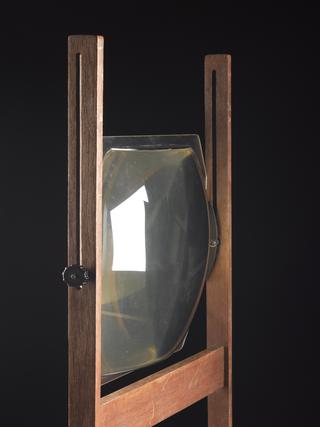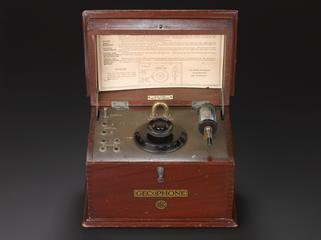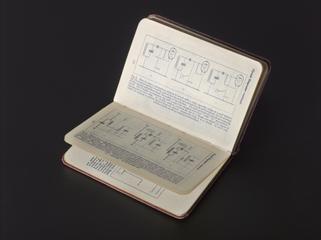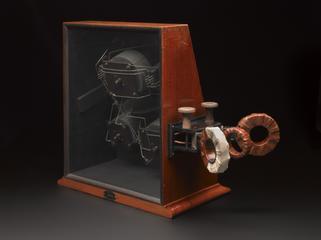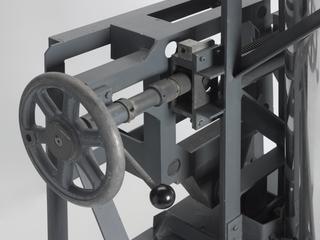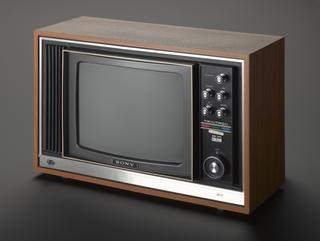





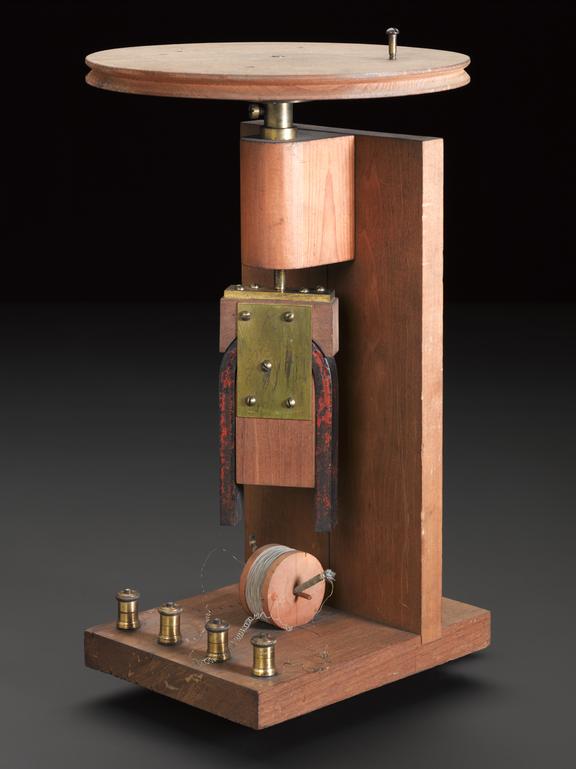


Experimental model of Marconi's magnetic detector with moving magnet, unknown maker, England, 1900-1910.
In the developed form of Marconi’s magnetic detector, an endless band of iron wires is moved by clockwork past permanent magnets at about eight centimetres a second. At the point where the moving band experiences a strong field from the magnets, it is surrounded by two coils of wire; one coil carries the radio-frequency signal from the aerial, the other is connected to headphones. The signal received from a spark transmitter consists of separate bursts of radio frequency current, recurring at audio frequency. As each burst occurs, wire that has entered the coils since the previous burst responds to the magnets, inducing an impulse of current through the headphones, and the rapid succession of such impulses gives an audible note. This is an experimental example where a single horseshoe magnet is rotated above the coils to provide the changing magnetic field.
Details
- Category:
- Radio Communication
- Object Number:
- 1917-130
- Materials:
- metal (unknown), wood (unidentified) and brass (copper, zinc alloy)
- Measurements:
-
overall: 360 mm x 135 mm x 180 mm, 1.56 kg
- type:
- radio receiver
- credit:
- Purchased from W D Duddell
